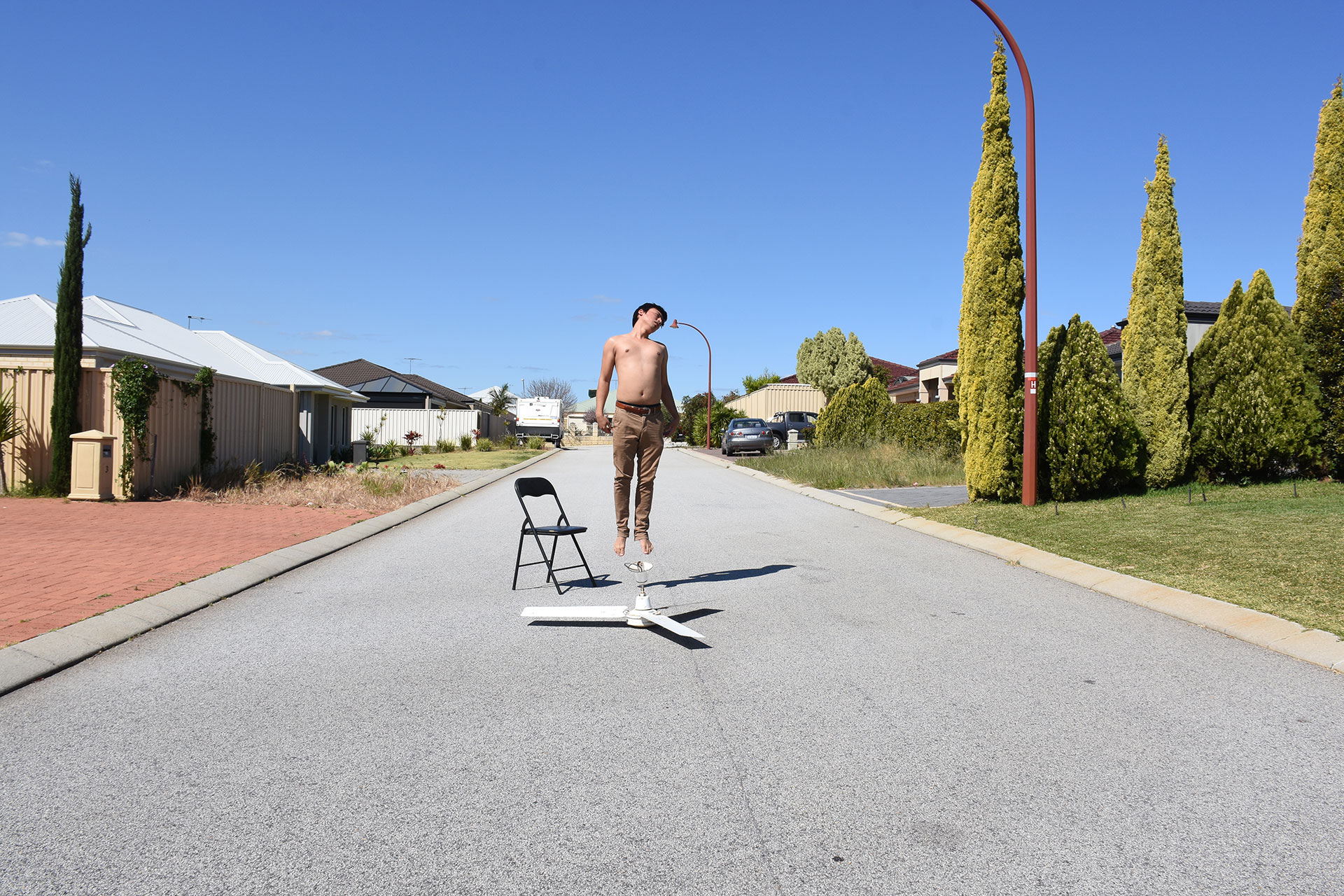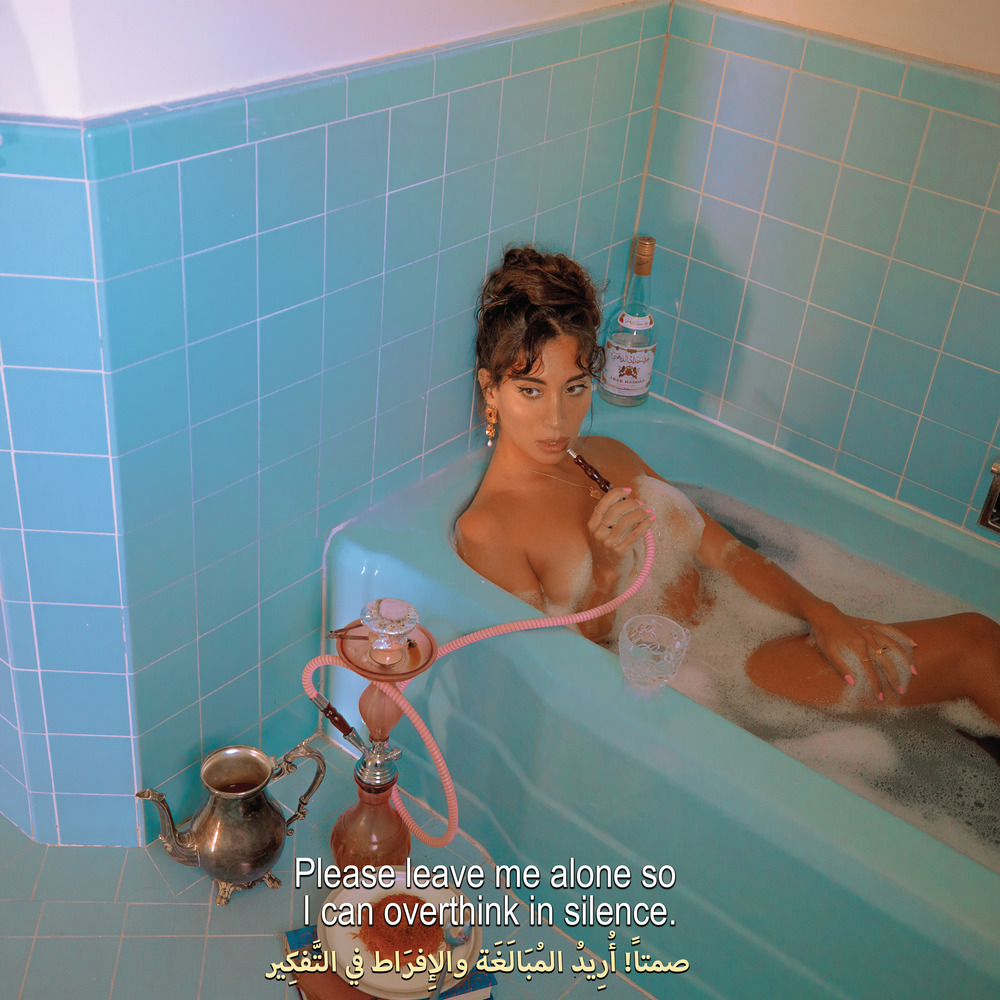A collection of giant, colourful musclebound figures occupy AGWA’s newest gallery space in Tim Meakins’ “Muscle Beach”
It’s the artist’s first major solo exhibition, playfully exploring modern exercise culture and the artist’s own strained relationship to the body.
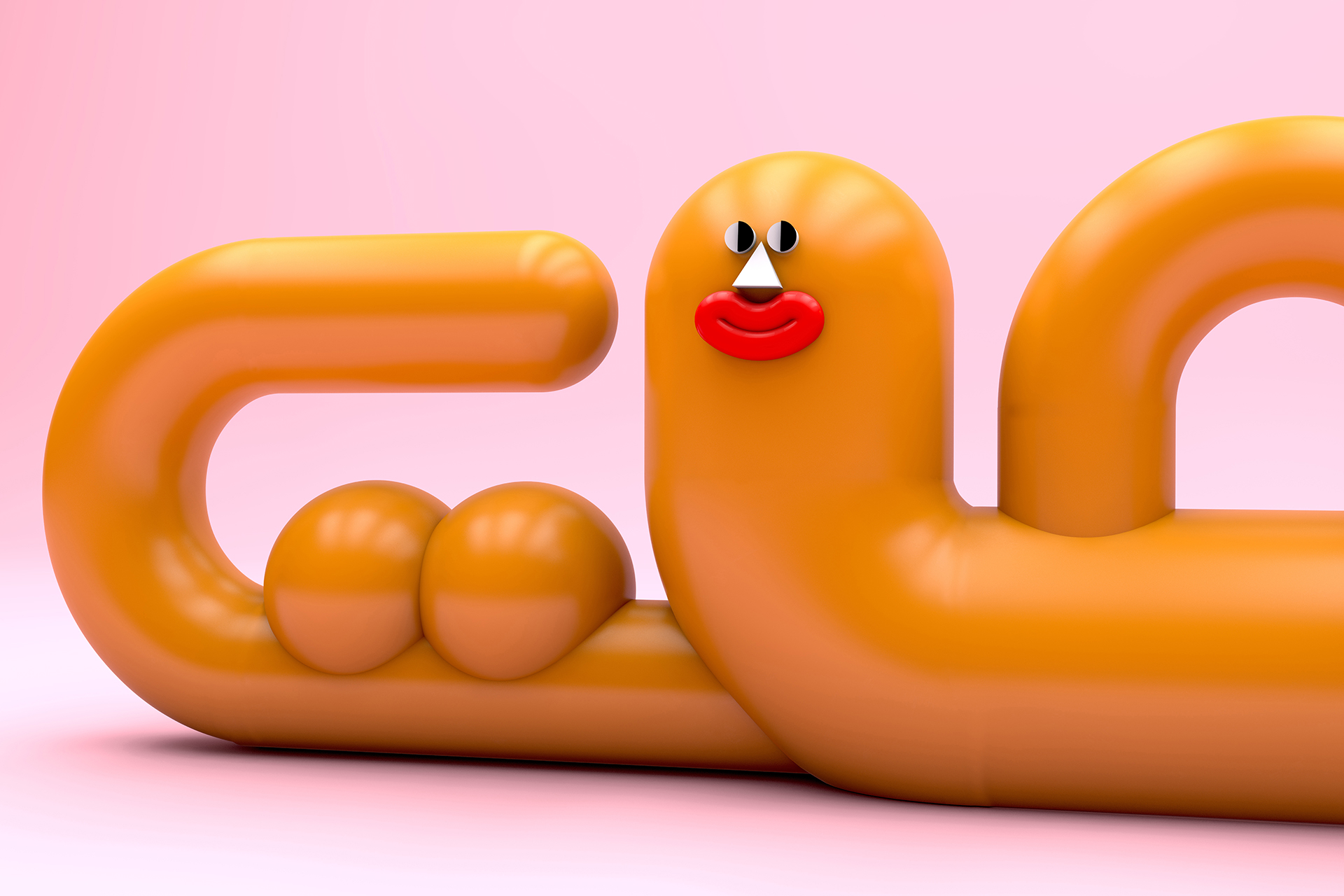
Tim Meakins study of Lay 2021.
GROWING UP, Tim Meakins was sure of two things: that he would one day be a fantastically wealthy professional athlete, and that he would live in America. “I told my mum by 23 I was going to be a millionaire, and that I would buy her a house,” Meakins says. But a string of injuries (a dislocated shoulder, dislocated hip, countless knee blow-outs) took care of one of those aspirations (“Sorry, mum.”). And the other sort of fell away on its own. But the theme of the body—its aspirations and its failures—had taken root.
It is this theme that Meakins runs with in Muscle Beach, a playful commission taking pride of place in AGWA’s newly opened interior rooftop gallery. Comprising a cast of giant 2D and 3D musclebound figures in various poses of exertion, Muscle Beach holds a cartoon lens to the exercise culture of its Californian namesake, and to modern narcissism in general.
Meakins does not do things in half measures, nor does he do them in grayscale. Some of the pieces would fit inside a backpack, one is as long as a giraffe is tall. All pop in bright monochrome: blues, reds, yellows, pinks, oranges and greens. The sheer scale of the works lends the show an interactive quality: viewers can walk beneath the bowed weights and bulging biceps like Lilliputians. The figures themselves are warped and simplified: limbs and torsos are smoothed cylinders, biceps spherical protrusions. They are no more human than a bouncy castle is a castle.
Meakins does not do things in half measures, nor does he do them in grayscale. ... The figures are warped and simplified: limbs and torsos are smoothed cylinders, biceps spherical protrusions. They are no more human than a bouncy castle is a castle.
Muscle Beach is Meakins’ first solo show in a major gallery. When he took the call from AGWA, Meakins pinched himself. “I remember ending that conversation being, like, ‘I didn’t think that shit happened’… I thought they wanted me to do design for them, branding or some catalogue,” Meakins recalls. The artist with no arts background sees this as a reflection of a new era at AGWA.
“It says a lot about the institution,” he says, noting its openness to unconventional ways of making work, of coming up with ideas. “My brain isn’t thinking in the textbooks.” And how is his brain thinking? “If I was to say something directly inspired my work it would be cartoons, or it would be video games, or it would be people, conversations, viewing someone on the street, viewing an interaction.” Nothing is forced, no idols worshipped, no schools (of thought, aesthetic) venerated and imitated; just an intimate internal conversation in which Meakins asks himself: “Does this look right? Does it feel right? Is it funny?”
When Meakins was 21, he suffered a major knee injury playing soccer. A reconstruction was scheduled, with a month on the couch to follow. “It was one of my favourite times,” he says. “I literally just played games for four weeks.” This period of physical inactivity ushered in a mental renaissance. “I often think I subbed one out for the other,” he says of his corporeal-cerebral switcheroo. “When I started to play sport again my body just said ‘no’, which makes sense—I did no training, all I did was study, design. It’s interesting that a lot of my work is quite responsive to the body and often connects to injury or impact or pressure.”
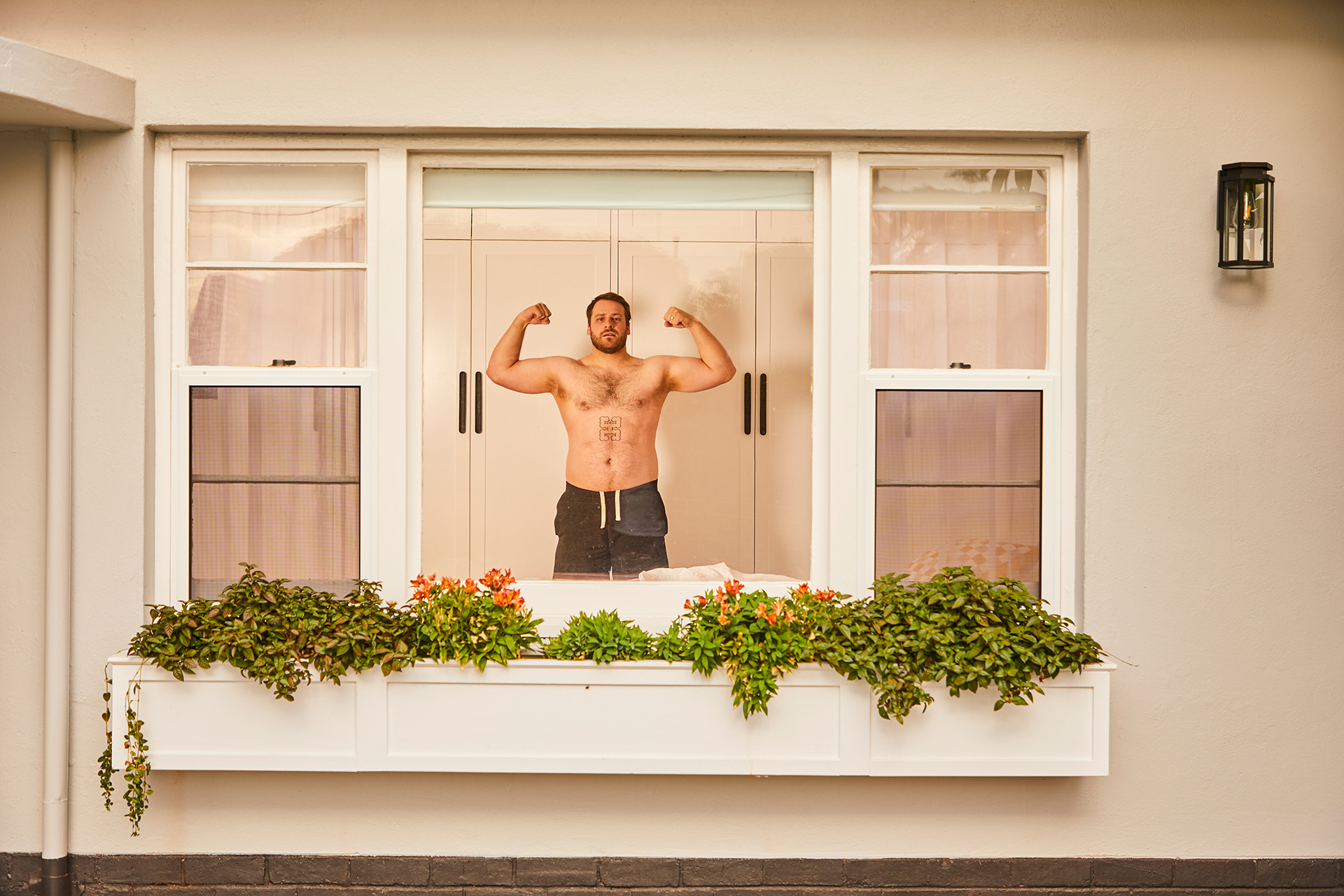
The real Muscle Beach is located in Santa Monica, Los Angeles, not far from the end of Route 66. If America were a video game, you would probably face the final boss here. It’s where the whole fever dream crescendos, where the grand experiment of individualism and self-realisation finds its logical conclusion: the pursuit of perfection, incarnate.
It’s also where Meakins, aged 15, asked his American mother if he could buy the mixtape a rapper was hawking on the strip. He remembers this as the first time he exercised some sort of autonomy, took the controls to the role-playing game that is his own life. Meakins’ parents encouraged his independence. “I lived in a very open family,” he says. “My parents consistently supported us and said ‘try things’.” He may not have applied it deliberately, but Meakins’ parents’ hopes for their children have found a facsimile in his approach to his art.
More often than not, trying means failing. It’s a familiar concept for Meakins—in 2019, over the course of two months, he produced a book of glossy 3D renders titled Large Amounts of Failure, which laid the aesthetic groundwork for his current show. “I think there’s a constant underlying idea of failure within all the work,” Meakins suggests. In Muscle Beach, these ideas are experienced through the avatar of the body. “People can feel that, and people can understand that,” he says. “It’s a really accessible way of understanding work.”
Meakins’ work rejects realism. He focuses on actions (and within them, motivations, desires) reduced to their essential parts. The effect is either comical or sad, I’m not entirely sure. So, too, the faces worn by the figures. Meakins describes them as happy/normal and angry/forced. I question whether the happy face might be viewed by some as tragic, doleful. “I think so,” Meakins replies. “At the end of the day, the works are reflections of us.”
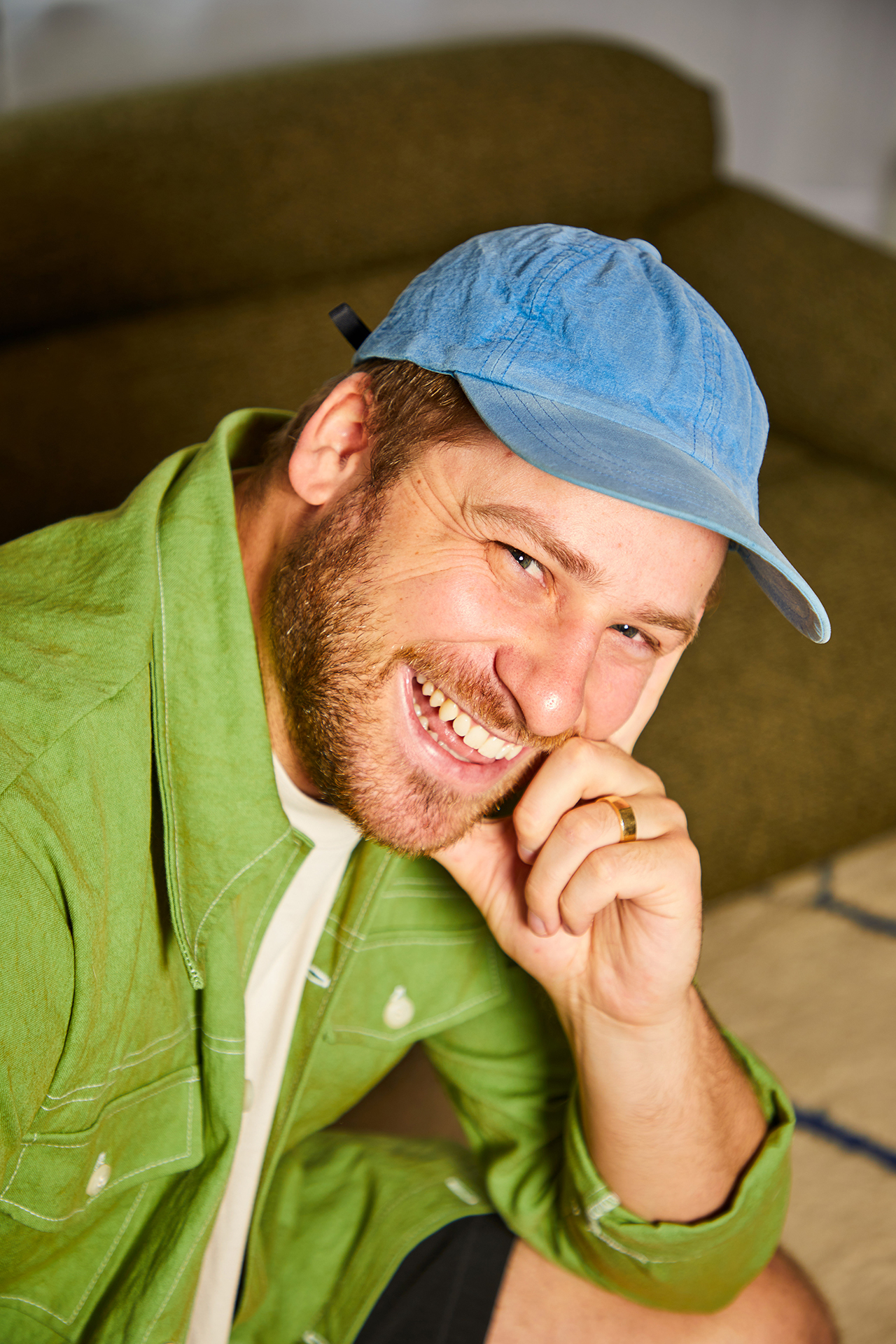
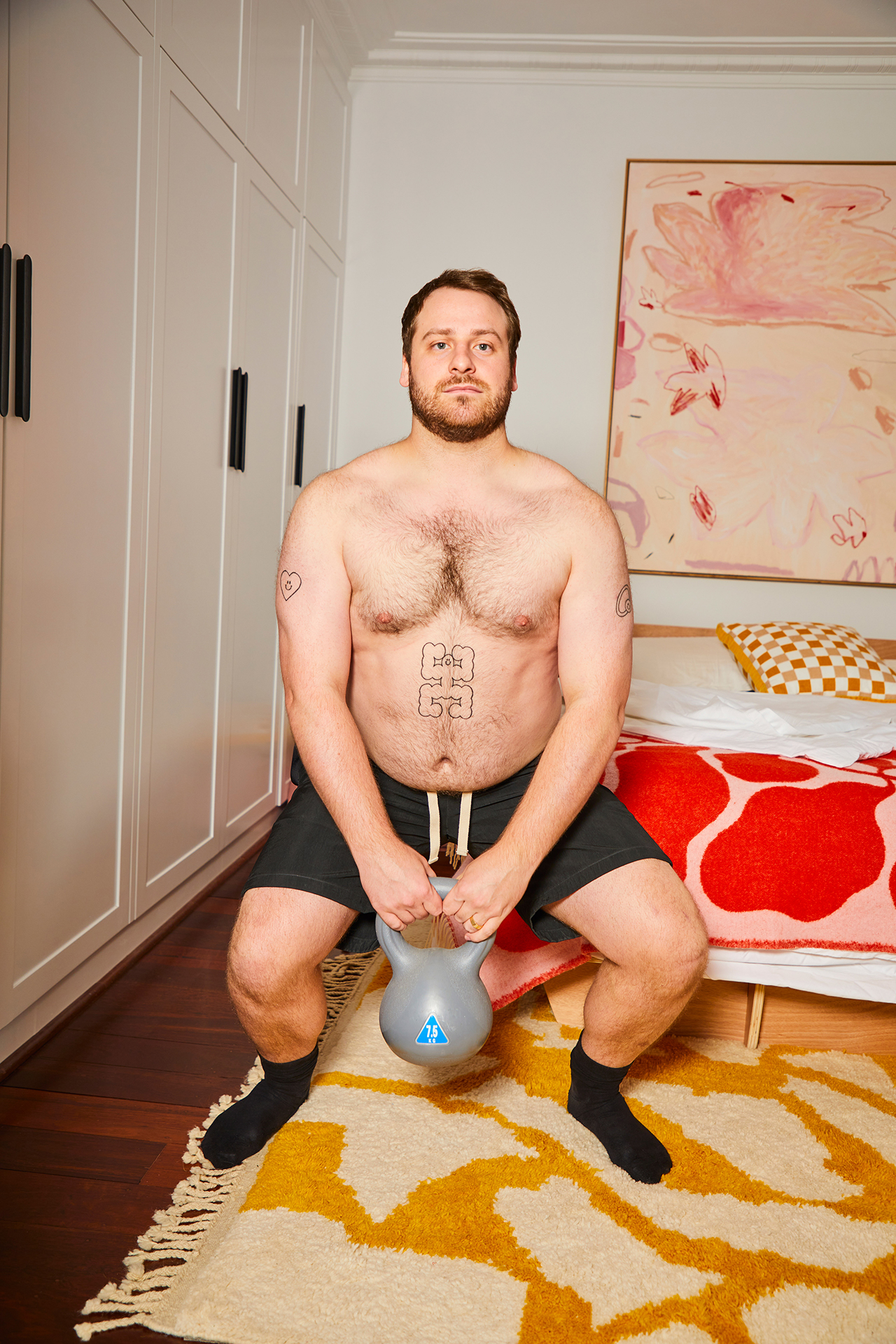
Either way, it’s the funhouse of Meakins’ mind that provides the mirrors. He favours glitzy, rubbery colours that don’t exist in the natural world. By doing so, he avoids the specifics of reality, keeping his works general, primary. “The green used in the show does not reflect a grass green, the blue in the show does not reflect a sky.” By not being referable to anything in particular, the works can be transposed onto everything. But perhaps it’s less cerebral than that. “I like to use pink,” Meakins says. “It’s just: ‘This would look great in pink’, or: ‘If it’s blue it would be too strong’.”
One decision follows another, and each decision speaks to those that came before. Meakins’ ear is tuned to the internal music of the piece. The elements must sing to each other. “It’s about making things structurally feel good. One needs to be tall, one needs to be short, there needs to be some form of leverage between the two, some things need to off-balance… the colour ties into everything else, every other decision.”
Eventually, Meakins explains, if he spends enough time with a work and pays enough attention to it, “things start to pop off each other, things start to talk to each other”. And that’s how he would like people to experience the works in Muscle Beach, by connecting the colours, shapes, feelings, poses, to “literally bounce from one to another, repeat, and just keep going in circles”.
Meakins’ ear is tuned to the internal music of the piece. The elements must sing to each other. ... Eventually, Meakins explains, if he spends enough time with a work and pays enough attention to it, “things start to pop off each other, things start to talk to each other”.
Meakins no longer wants to live in America. In the intervening years, he says, he’s “grown up”. When asked about the trajectory of his career, he remains humble in the face of mounting successes, diverting attention to the health and happiness of those around him—the important things.
In this way, Muscle Beach can be viewed as a work about discontent by a young artist experiencing radical contentment. “Why see the world, when you got the beach?” Frank Ocean sang of the sands not far from Muscle Beach. But there are beaches elsewhere, and right now, Meakins is perfectly happy on his.
This article was first published in the print publication The View From Here in October 2021 under the title Muscle Beach.
